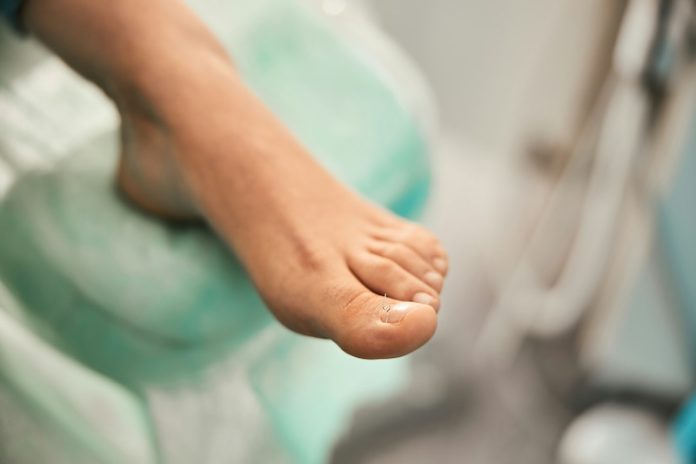
Gout is a painful condition that affects millions of people worldwide. It is a type of arthritis that happens when too much uric acid builds up in the body. This acid forms tiny, sharp crystals that get stuck in the joints, causing swelling, redness, and intense pain.
Gout often starts in the foot, especially in the big toe, but it can also affect other joints. Over time, repeated attacks can lead to permanent joint damage and make movement difficult.
Doctors have long believed that high levels of uric acid in the blood (a condition called hyperuricemia) were the main cause of gout. However, many people with high uric acid never develop the disease. In fact, four times more people have high uric acid without gout than those who actually suffer from it. This has puzzled scientists for years.
Now, a new study from the University of California San Diego and other institutions has found another key factor in gout. The researchers discovered a problem in a molecule called lubricin, a protein that helps joints move smoothly.
They believe that low levels of lubricin in joint fluid could lead to gout and make the disease worse. Their findings suggest that lubricin could be a new target for preventing and treating gout.
To make this discovery, the scientists studied a rare case of gout in a patient who had severe joint damage from uric acid crystals but did not have high levels of uric acid in her blood. This was unusual because most gout patients have both high uric acid in their blood and crystals in their joints.
By analyzing the patient’s condition, the researchers identified a specific biological pathway that was not working properly. The biggest problem was a severe drop in lubricin.
Lubricin is essential for joint health. It coats and protects the joint surface, making movement smooth and reducing friction. It also helps regulate certain immune cells that cause inflammation in the joints. The researchers found that under normal conditions, lubricin prevents uric acid from crystallizing inside the joint.
It also helps control the production of an enzyme called xanthine oxidase, which makes uric acid. Without enough lubricin, more uric acid is produced inside the joint, and it is more likely to turn into harmful crystals.
To see if this issue was common among gout patients, the scientists tested people with the regular form of gout. They found that these patients also had much lower levels of lubricin in their joint fluid.
This suggests that some people may be more likely to develop gout based on their genes—specifically, variations in the genes that control lubricin production. This could explain why some people with high uric acid never develop gout, while others do.
These findings open up new possibilities for treatment. Instead of just lowering uric acid levels in the blood, future therapies might focus on increasing lubricin in the joints. This could help prevent uric acid from crystallizing and reduce painful flare-ups.
The study, led by Robert Terkeltaub and his team, was published in Arthritis & Rheumatology. It provides a new way of thinking about gout and may lead to better treatments for people suffering from this painful condition.
If you care about pain, please read studies about how to manage your back pain, and Krill oil could improve muscle health in older people.
For more information about pain, please see recent studies about how to live pain-free with arthritis, and results showing common native American plant may help reduce diarrhea and pain.
Copyright © 2025 Knowridge Science Report. All rights reserved.



